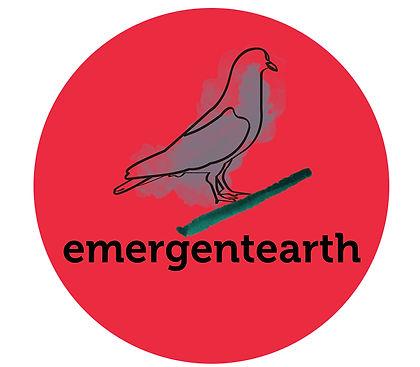an emergent
website design
by
peter jay stein, md, ma
atmosphere
asthenosphere
lithosphere
regolith
biosphere
hydrosphere



This 54 page synopsis of the evolution
of the Earth, the origin and progression of life, and the
emergence of humans as descendants of the hominin lineage, divides the last 4.57 billion years into progressively overlapping, imagistic, time segments, to outline our place in biological existence.
magnetosphere
ionosphere
FORTY
Emergent Triassic Period: 252 - 201 mya

Features of the Triassic Period: 252 - 201 mya:
2) The "Triassic" refers to the 3-fold division of rocks of this age, in Germany, "...the Trias of Friedrich August von Alberti (1834) [that] united a trio of formations widespread in southern Germany - a lower Buntsandstein ("colored sandstone"), Muschelkalk ("clam limestone") and an upper Keuper (non-marine reddish beds)..." (The Geologic Time Scale, 2012, p. 682)..
1) This is the earliest period of the Mesozoic era, which follows the largest extinction event in the history of life, i.e., the Permian extinction: "...the onset of the enormous Siberian continental flood basalts was the main contributor to the end-Permian wave of extinctions. Release of aerosols and/or carbon dioxide, coupled with their cooling/warming feedbacks on ocean circulation and stratification and on terrestrial systems, precipitated a progression of environmental and ecological stresses..." (The Geologic Time Scale, 2012, p. 683)..
3) This begins the evolution of the earliest dinosaurs.
4) The Earth's land masses remain combined as the supercontinent of Pangaea.
5) Reptiles undergo an adaptive radiation, leading to great diversity.
6) Mammal-like therapsids, ranged from small-sized insectivores (insect-eating reptiles), to large herbivores (plant-eating reptiles).
7) Thecodonts are the ancestral reptiles that give rise to the crocodilians, flying reptiles, dinosaurs, and birds.
8) Marine reptiles appeared:
a) plesiosaurs: paddle-like fins; bodies 50 feet in length; and
b) ichthyosaurs: bodies resembled sharks and porpoises, with short necks, large dorsal fins, and shark-type tails, and had very large eyes for deep diving.



